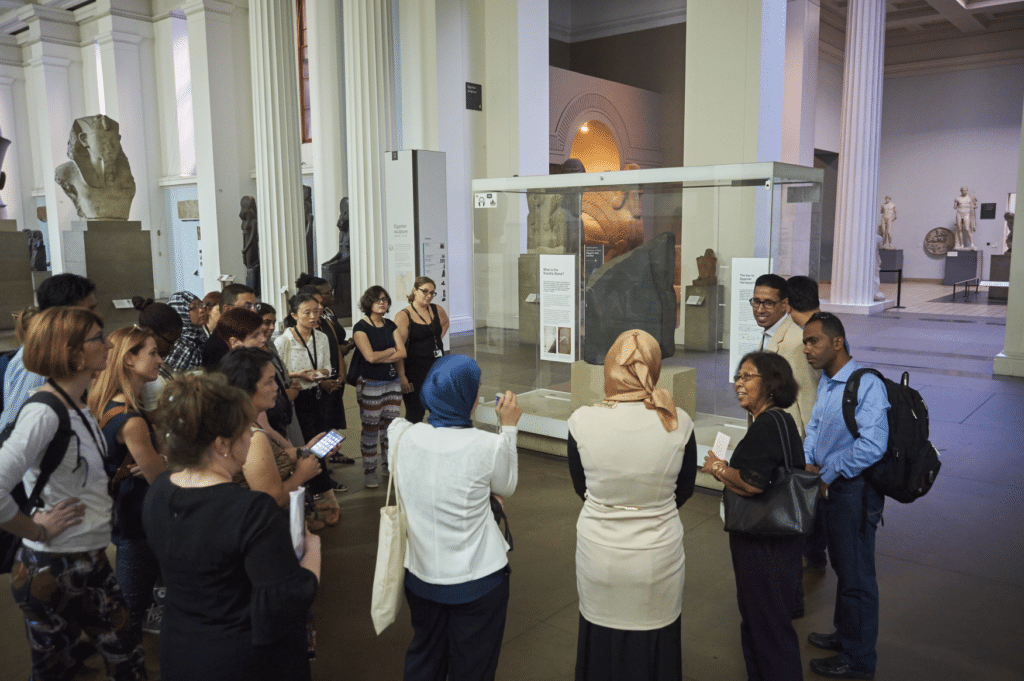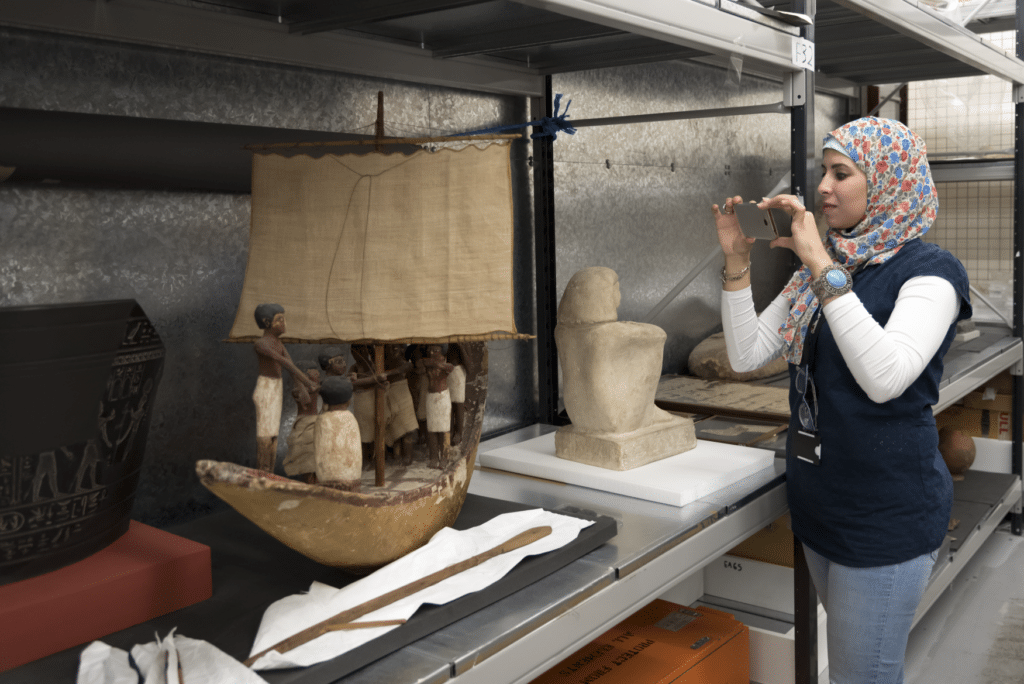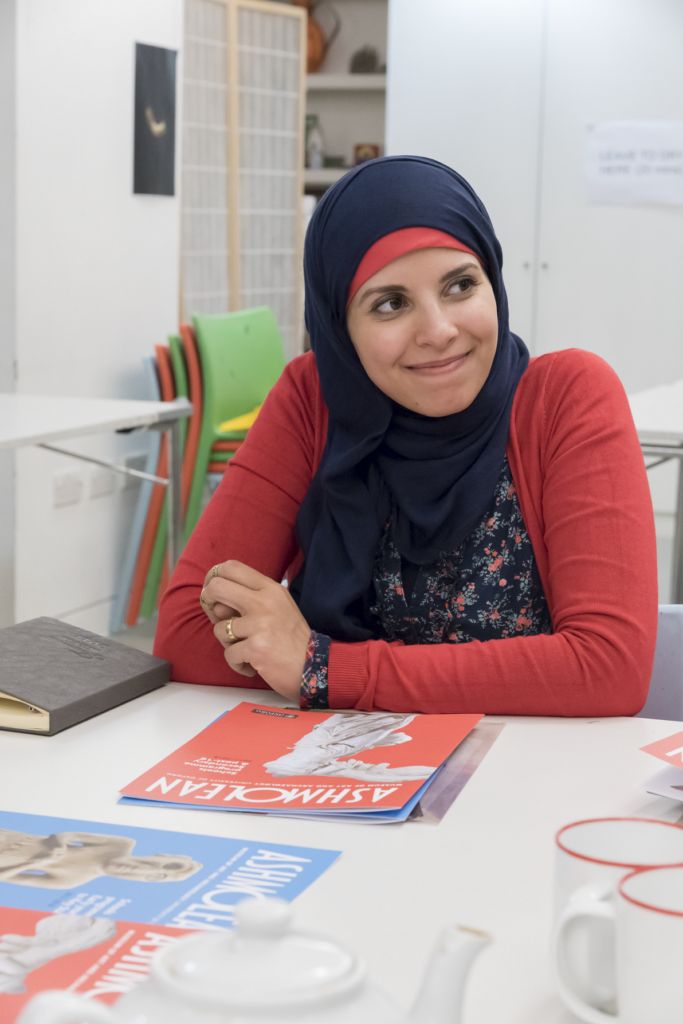The Department of Egypt and Sudan and the ITP work together on a co-curation opportunity
Written by Claire Messenger, Manager, International Training Programme and Heba Khairy, Exhibition Coordinator, The Grand Egyptian Museum, Egypt, (ITP 2017)
The British Museum’s International Training Programme (ITP) has, since 2006, sought to provide opportunities for shared learning, discussion and collaboration between museum and heritage professionals from across the globe. To date, our growing global network totals 299 fellows from 48 countries and offering opportunities for professional and personal development are a key aspect of the ITP.
Working with colleagues in the Department of Egypt and Sudan we have invited Heba Khairy (Egypt, ITP Fellow 2017) to join us at the British Museum for a project to work on a co-curated display in the British Museum.

This project will see the British Museum commemorate the centenary of the discovery of the tomb of Tutankhamun (opened in November 1922) through objects from the Museum’s collection and we have asked Heba to co-curate a small display in Room 4, the Egyptian Sculpture Gallery. This display will form the last stop on a short Tutankhamun trail. The trail will feature around seven stops around Room 4 which will look at the story of Tutankhamun, who he was, what he did and why he was erased from history. The theme of the case, the final stop in the trail, will be the ‘legacy’ of Tutankhamun and how he is viewed by Egyptians today.

This model of co-curation has previously been used for Room 3 exhibitions and UK tours, Celebrating Ganesha and Rodin: rethinking the fragment, and has proved both popular with our audiences and with our ITP fellows from Croatia and India.
Previous ITP co-curation projects can be viewed on our legacy projects page.
Here’s what Heba says about the project……
The ITP is always keen to sustainably develop the competencies of the ITP fellows and to involve them permanently with the British Museum projects. The Tutankhamun Co-curation project represents an extraordinary project in the context of the centenary of the discovery of King Tutankhamun’s tomb in 1922 by the British archaeologist Howard Carter.
I was very keen to join this project for many reasons, as the project represents for me an out-of-the-box idea, as the project aims strongly to shed light on the relationship of this mysterious king with both his ancestors from ancient Egyptians and his continuity among the modern Egyptians.
This experience will offer me many new skills and reflections at many levels, first in terms of creating new ideas to develop the permanent galleries within the Egyptian museums by creating new topics within or out of the context of the display itself.

Secondly, the importance and effectiveness of creating a link between the past and the present to shape the future, which is one of the important roles played by heritage and museums, in addition to creating a modern dialogue between what is inherited and continue to be represented in a modern manner within the modern Egyptian society and its reflections on our identity as Egyptians.
Third, this project represents a new and advanced interest from the British Museum towards the Egyptian heritage, as it expresses the British Museum’s keenness to celebrate the centenary of the discovery of one of the masterpieces of the ancient Egyptian civilization and one of the important symbols of its identity.

During this project, I will work closely with the Egypt and Sudan Department team and catch up with the latest projects of the Ashmolean Museum and the Petrie Museum. The opportunity to work and participate closely with this distinguished team will add many practical and academic values to my professional profile and personal skills. It will also provide me with new insights and methodologies regarding the design and presentation of a museum exhibition with a different approach and message.
I have worked closely with King Tutankhamun’s collection during my work at the Grand Egyptian Museum since 2015, where the Grand Egyptian Museum will display the entire collection of this golden pharaoh’s treasures. Accordingly, I can present new ideas to the BM team regarding the Tut exhibition, to make them able to develop new approaches different from the King Tut display in Egypt.
The fact that I am Egyptian and working within the cultural heritage sector in Egypt, I believe that I can offer new ideas and approaches regarding what the King Tut Collection represents to contemporary Egyptians, giving a deep knowledge of their passion and curiosity about Tut’s hidden knowledge stories and theories.
We are very excited to be working with Heba on this project – our third co-curation opportunity and we look forward to keeping you up-to-date with the trail and display as it develops.
